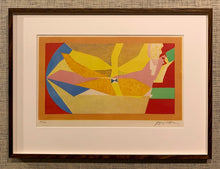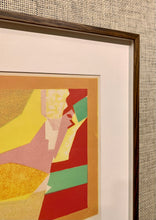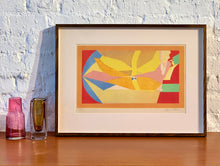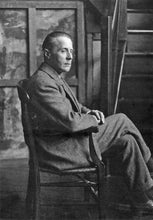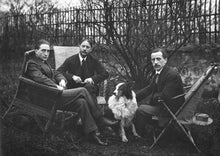
artist: Jacques Villon (French 1875-1963)
medium: original colour lithograph
dimensions: 64 1/2 x 47 1/2 cm framed size (approx)
signed and numbered by Villon in graphite
numbered 30/220
published 1957
presented in a new hand finished timber frame with archival mat and non-reflective UV glass
AU $1330 (approx US $860 / 805 EUROS / 120,500 yen / 695 GBP - for exact current conversion visit xe.com)
artist biography
French painter and printmaker Jacques Villon advanced the evolution of Cubism in Paris in the early 20th century. Unlike the reduced palette of the earliest iteration of Cubism, many of Villon’s paintings explore truncated forms and planar shifts through relatively saturated colorus, rich chromatic contrasts and figural or landscape compositions. Alongside his brother Raymond Duchamp, he founded the Puteaux Group, Cubist group which included Fernand Léger, Robert Delaunay,and Francis Picabia. Villon contributed to the development of the 1912 Salon de la Section d’Or, a critical exhibition for the rise of Cubism and Orphism.
Born Gaston Duchamp in 1875, Villon was the elder brother to Raymond, Marcel and Suzanne Duchamp, three major modernist artists of the 20th century. After deciding to become an artist, Gaston changed his name to Jacques Villon after the medieval French poet François Villon. He focused on prints and caricatures for illustrated journals early in his career, but was drawn to the artists and critics who regularly frequented his family home, including Jean Metzinger, Albert Gleizes and the artists who lived in the thriving community of Montmartre. After the Salon de la Section d’Or show, Villon exhibited at the 1913 Armory Show in New York, which was hugely consequential in bringing Cubism and European modernism more broadly to the United States. In 1955, he designed the much admired stained-glass windows for the Cathedral of Metz, France, alongside Marc Chagall and Roger Bissière.
Villon’s quiet nature, in conjunction with the towering figure of his brother Marcel Duchamp, contributed to his work remaining relatively less known than those of his contemporaries; however, his achievements were considerable, and continue to impress collectors and admirers of his work. He was named Chevalier of the Legion d’Honor, and promoted to Officier and later Commandeur. He was awarded the Carnegie Prize in 1950 and the Grand Prix at the 1956 Venice Biennale. His L’Acrobate sold at Sotheby’s for US $1.24 million. Villon’s works are held at the Museum of Modern Art, New York; the National Gallery, Washington, D.C.; the Rijksmuseum, Amsterdam; and many other major institutions.








